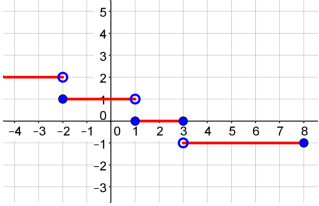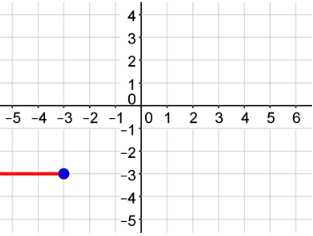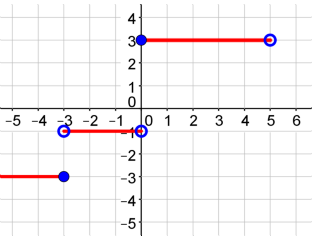Try It
Graphing Step Functions Practice Problems
Practice Problem #1
Graph the step function. Pay close attention to your endpoints.

Graph the first piece of the function.

Graph the second piece of the function.

Graph the third piece of the function.

Graph the fourth piece of the function.

Practice Problem #2
Graph the step function below. Pay close attention to your endpoints.

Graph the first piece of the function.

Graph the second piece of the function.

Graph the third piece of the function.

Practice Problem #3
You've been asked to graph this function:
You want to start by graphing the y = x − 2 piece. Which of the following T tables or x | y tables would be most helpful with graphing this piece?
a.
| x | y |
|---|---|
| -3 | |
| -1 | |
| 0 |
b.
| x | y |
|---|---|
| -3 | |
| 0 | |
| 4 |
c.
| x | y |
|---|---|
| 0 | |
| 1 | |
| 4 |
d.
| x | y |
|---|---|
| 4 | |
| 5 | |
| 6 |